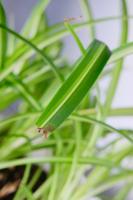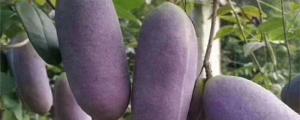Introduction
Desert plants are some of the most resilient organisms in the world, with the ability to survive in extreme environments where water is scarce. They have adapted unique physical and physiological mechanisms to prevent water loss and maintain their survival. In this article, we will explore how desert plants prevent water loss and the adaptations that have evolved to enable this.
Physical Adaptations
The first line of defense for desert plants to prevent water loss is through physical adaptations. One of the most common physical adaptations is reduced leaf area. Desert plants have smaller leaves or spines, which reduce the surface area for water evaporation. This adaptation is especially useful in areas with high temperatures and low humidity, where water loss through leaf surfaces is a significant problem.
Another physical adaptation is the presence of thick waxy cuticles. The waxy layer on the outer surface of the leaves of desert plants provides a barrier that limits water evaporation while also providing protection against predators and disease. The thickness of the cuticle can vary depending on the species, with some having thicker cuticles than others.
Physiological Adaptations
In addition to physical adaptations, desert plants have developed several physiological adaptations to prevent water loss. One of the most important is the ability to store water in specialized organs such as stems, leaves, and roots. This water storage enables the plants to survive long periods of drought by using the stored water to keep their tissues hydrated until the next rainfall.
Another key adaptation is the way desert plants regulate their stomata. Stomata are pores located on the surface of leaves that are responsible for gas exchange. However, stomata are also one of the primary sources of water loss in plants. Desert plants have evolved to keep their stomata closed during the day to prevent water loss due to evaporation from the plant surface. Instead, they open their stomata at night when temperatures are cooler, and humidity is higher to take in carbon dioxide for photosynthesis.
Behavioral Adaptations
Desert plants have also developed several behavioral adaptations to prevent water loss. One of the most important is the ability to change the angle and position of their leaves to reduce the surface area exposed to the sun. By positioning their leaves to avoid direct sunlight, desert plants can reduce heat absorption and prevent water loss due to evaporation.
Another behavioral adaptation is the ability to shed leaves during periods of drought. This shedding of leaves allows the plants to reduce their water lost through transpiration and focus their resources on survival until the next rainfall. Some desert plants even have the ability to re-grow leaves once moisture levels have returned to normal.
Conclusion
In conclusion, desert plants have a range of physical, physiological, and behavioral adaptations to prevent water loss in arid environments. While physical adaptations like thick cuticles and reduced leaf area provide a first line of defense, physiological adaptations like water storage and stomatal regulation help the plants sustain themselves over long periods. Finally, behavioral adaptations like leaf positioning and shedding allow the plants to adapt to changing environmental conditions and ensure their survival in harsh desert environments. By learning more about these adaptations, we can gain a greater appreciation for the incredible resilience of desert plants and the unique ways they have adapted to extreme conditions.

 how many times do yo...
how many times do yo... how many planted tre...
how many planted tre... how many pine trees ...
how many pine trees ... how many pecan trees...
how many pecan trees... how many plants comp...
how many plants comp... how many plants can ...
how many plants can ... how many plants and ...
how many plants and ... how many pepper plan...
how many pepper plan...

































